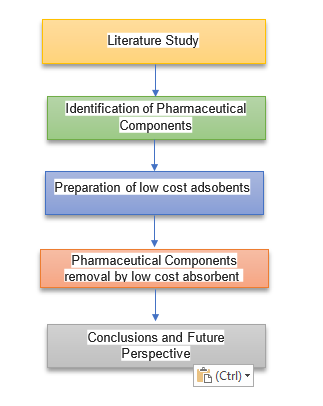
Over the past few decades, pharmaceuticals have contaminated the marine ecosystem. The entry of prescription medications into the environment, their underlying causes and problems, and effective methods for treating such contaminated water are all evaluated in this study. Adsorption is becoming a more popular preferred treatment method because, compared to other post-secondary treatments, it has less strength requirements and is easier to use. Despite being extensively researched as a chemosorptive for prescription medications, industrial activated charcoal is heavily restricted due to its expensive cost. For the purpose of eliminating prescription drugs from water and wastewater, novel unconventional low-cost alternatives were looked into, and adsorbents based solely on clay, biochar, agricultural wastes, industrial wastes, and metal-natural frameworks were discussed in a number of research studies. This second study examines prominent articles that address the problem, covering the continuous fixed-bed process, regeneration capabilities, historical, economic, and practical aspects, as well as adsorption performance in terms of kinetics, equilibrium, and thermodynamics. Chemicals known as pharmaceuticals pollute the environment. This paper discusses the prevalence of pharmaceuticals in the environment, their main causes and effects, and proactive steps to remove them from the contaminated medium. This summary explains how the pollutant is mixed with the aquatic environment, along with its fundamental causes, insinuations, and effective methods for eliminating it. Compared to other therapies, adsorption offers advantages including less strength depletion and easier functioning conditions, making it a promising therapeutic approach.
Total file downloads: 38